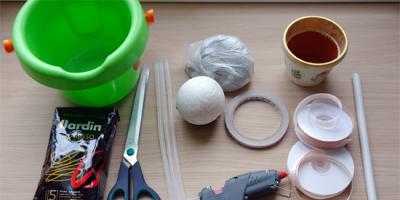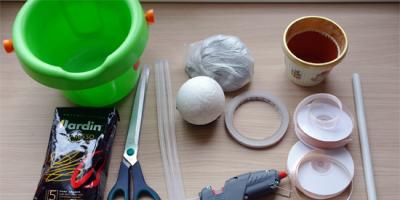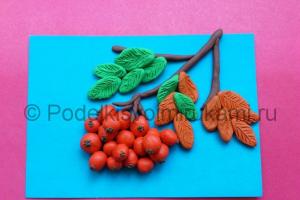Photo of symbiosis of mushrooms with roots
A striking example of fungal symbiosis is mycorrhiza - a community of fungi and higher plants (various trees). With such “cooperation” both the tree and the mushroom benefit. Settling on the roots of a tree, the fungus performs the function of absorbing root hairs and helps the tree absorb nutrients from the soil. With this symbiosis, the fungus receives ready-made organic substances (sugars) from the tree, which are synthesized in the leaves of the plant with the help of chlorophyll.
In addition, during the symbiosis of fungi and plants, the mycelium produces substances such as antibiotics that protect the tree from various pathogenic bacteria and pathogenic fungi, as well as growth stimulants such as gibberellin. It has been noted that trees under which cap mushrooms grow practically do not get sick. In addition, the tree and the mushroom actively exchange vitamins (mainly groups B and PP).
Many cap mushrooms form a symbiosis with roots various types plants. Moreover, it has been established that each type of tree is capable of forming mycorrhiza not with one type of fungus, but with dozens different types.

In the photo Lichen
Another example of the symbiosis of lower fungi with organisms of other species is lichens, which are a union of fungi (mainly ascomycetes) with microscopic algae. What is the symbiosis of fungi and algae, and how does such “cooperation” occur?
Until the middle of the 19th century, it was believed that lichens were separate organisms, but in 1867, Russian botanists A. S. Famintsyn and O. V. Baranetsky established that lichens are not separate organisms, but a community of fungi and algae. Both symbionts benefit from this union. Algae, with the help of chlorophyll, synthesize organic substances (sugars), which the mycelium feeds on, and the mycelium supplies the algae with water and minerals, which it sucks from the substrate, and also protects them from drying out.
Thanks to the symbiosis of fungus and algae, lichens live in places where neither fungi nor algae can exist separately. They inhabit hot deserts, high mountains and harsh northern regions.
Lichens are even more mysterious creatures of nature than mushrooms. They change all the functions that are inherent in separately living fungi and algae. All vital processes in them proceed very slowly, they grow slowly (from 0.0004 to several mm per year), and also age slowly. These unusual creatures are distinguished by a very long life expectancy - scientists suggest that the age of one of the lichens in Antarctica exceeds 10 thousand years, and the age of the most common lichens that are found everywhere is at least 50-100 years.
Thanks to the collaboration of fungi and algae, lichens are much more resilient than mosses. They can live on substrates on which no other organism on our planet can exist. They are found on stone, metal, bones, glass and many other substrates.
Lichens still continue to amaze scientists. They contain substances that no longer exist in nature and which became known to people only thanks to lichens (some organic acids and alcohols, carbohydrates, antibiotics, etc.). The composition of lichens, formed by the symbiosis of fungi and algae, also includes tannins, pectins, amino acids, enzymes, vitamins and many other compounds. They accumulate various metals. Of the more than 300 compounds contained in lichens, at least 80 of them are found nowhere else in the living world of the Earth. Every year, scientists find in them more and more new substances that are not found in any other living organisms. Currently, more than 20 thousand species of lichens are already known, and every year scientists discover several dozen more new species of these organisms.
From this example it is clear that symbiosis is not always simple cohabitation, and sometimes gives rise to new properties that none of the symbionts had individually.
There are a great many such symbioses in nature. With such a partnership, both symbionts win.
It has been established that the desire for unification is most developed in mushrooms.
Mushrooms also enter into symbiosis with insects. An interesting association is the connection between some types of molds and leaf-cutter ants. These ants specifically breed mushrooms in their homes. In separate chambers of the anthill, these insects create entire plantations of these mushrooms. They specially prepare the soil on this plantation: they bring in pieces of leaves, crush them, “fertilize” them with their feces and the feces of caterpillars, which they specially keep in the neighboring chambers of the anthill, and only then introduce the smallest fungal hyphae into this substrate. It has been established that ants breed only mushrooms of certain genera and species that are not found anywhere in nature except anthills (mainly fungi of the genera Fusarium and Hypomyces), and each species of ants breeds certain types of mushrooms.
Ants not only create a mushroom plantation, but also actively care for it: they fertilize, prune and weed. They cut off the emerging fruiting bodies, preventing them from developing. In addition, ants bite off the ends of fungal hyphae, as a result of which proteins accumulate at the ends of the bitten off hyphae, forming nodules resembling fruiting bodies, which the ants then feed on and feed their babies. In addition, when the hyphae are trimmed, the mycelium of the fungi begins to grow faster.
“Weeding” is as follows: if mushrooms of other species appear on the plantation, the ants immediately remove them.
It is interesting that when creating a new anthill, the future queen, after the nuptial flight, flies to a new place, begins to dig tunnels for the home of her future family, and creates a mushroom plantation in one of the chambers. She takes mushroom hyphae from an old anthill before flight, placing them in a special suboral pouch.
Termites are also bred in similar plantations. In addition to ants and termites, bark beetles, boring insects, some types of flies and wasps, and even mosquitoes are involved in “mushroom farming.”
German scientist Fritz Schaudin discovered an interesting symbiosis of our ordinary blood-sucking mosquitoes with actinomycetes yeast fungi, which help them in the process of sucking blood.
Granular oiler - forms mycorrhiza with Scots pine and other pines
Mycorrhiza-formers (symbiotrophic macromycetes, mycorrhizal fungi, symbiotrophs) - fungi that form mycorrhiza on the roots of trees, shrubs and herbaceous plants. They are a specialized ecological group of fungi, recognized within modern mycology since the late 19th century. This group of fungi is specific in that its representatives enter into symbiosis with higher plants, do not have enzymes for the decomposition of cellulose and lignin, and exhibit energy dependence on the symbiont, which is the plant. The term mycorrhiza (“fungal root”) was introduced by the German mushroom researcher A. W. Frank in 1885.
Mycorrhiza
Mycorrhiza is the formation of a symbiosis of a fungus and a plant. It manifests itself in the fact that the mycelium (mycelium) located in the soil intertwines and envelops the roots and root hairs of plants. The roots of the plant are transformed, but this does not harm the owner. Mycorrhiza allows both the fungus and the plant to obtain missing nutrients from the soil. In modern mycology, a distinction is made between exotrophic and endotrophic mycorrhizae. With exotrophic mycorrhiza (ectomycorrhiza), the hyphae of the mycelium entwine the outside of plant roots, and with endotrophic mycorrhiza (endomycorrhiza), the hyphae penetrate into the intercellular space of the roots and inside the cells of the root parenchyma. Ectoendotrophic mycorrhiza (ectoendomycorrhiza) combines the features of both ectomycorrhiza and endomycorrhiza. The phenomenon was described in 1879-1881. Russian scientist F. M. Kamensky and he also gave the first attempt at its scientific explanation; the term was introduced by the German scientist A. V. Frank in 1885.
Differences between mycorrhiza-formers and saprotrophs
Both mycorrhiza-formers and saprotrophs use dead organic matter for their nutrition, and therefore, within the framework of mycology, there is a problem of distinguishing between these groups.
The mycorrhiza-former receives carbohydrates from the plant, which are used by the fungus as a source of energy, and the plant receives from the fungus elements of mineral nutrition, which the mycelium converts into a form digestible by the plant. At the same time, mycorrhiza-formers are similar to saprotrophs in the absence of a plant with which symbiosis is formed or in the stage of free-living mycelium.
L.A. Garibova in her book “The Mysterious World of Mushrooms” identifies the following differences, which indicate a difference in the biochemistry of these ecological groups of fungi:
- only mycorrhiza-formers form indole compounds (some saprotrophs also form them, but in significantly smaller quantities);
- mycorrhiza-formers produce growth substances such as auxins;
- mycorrhiza-formers have almost no antibiotic properties;
- mycorrhiza-formers do not participate in the destruction of cellulose and are not able to develop on it without carbon sources available to them;
- most mycorrhiza-formers do not have hydrolytic enzymes, in particular they do not synthesize laccase, which is needed for the oxidation of lignin;
- mycorrhiza-formers have a more complete amino acid composition.
Symbiotrophs in the fungal kingdom
Boletus is a tubular mushroom that forms mycorrhiza with aspens and other tree species
Red fly agaric - forms mycorrhiza mainly with birch and spruce
Mycorrhiza-formers are ascomycetes, basidiomycetes and zygomycetes.
Thus, mycorrhiza-formers are all tubular (boletal mushrooms), many of which are edible and collected by humans for food consumption: porcini mushrooms, boletus mushrooms, boletus mushrooms, moss mushrooms, oak mushrooms.
Mycorrhiza is formed by some gasteromycetes, mainly of the genus False puffball, as well as some species of marsupial fungi related to truffles (species from the order Truffleaceae ( tuberales)).
In modern mycological literature, there are references to the fact that some mushrooms, for example, thin mushroom and lacquer, can behave both as mycorrhiza-formers and as saprotrophs, depending on habitat conditions. They form mycorrhiza if conditions for trees are unfavorable (swamp, semi-desert, etc.)
The role of mycorrhiza-formers in the biocenosis
The functions of mycorrhiza-formers in the biocenosis, as indicated in the book by L. G. Garibova “The Mysterious World of Mushrooms,” come down to the following:
- Mycorrhiza formers convert nitrogen-containing compounds in the topsoil into a form that can be absorbed by plants.
- Mycorrhizal fungi contribute to the supply of phosphorus, calcium and potassium to plants.
- Mycorrhiza-forming mycelium increases the area of nutrition and water supply for plants. In the arid conditions of deserts and semi-deserts, woody plants receive soil nutrition thanks to mycorrhiza-formers.
- Protection of plants from pathogenic microorganisms.
Literature
- Burova L. G. The mysterious world of mushrooms - M.: Nauka, 1991.
Kira Stoletova
Everything on our planet is interconnected. A striking example of this is the concept of fungal root. If you take this word apart, it means the life of a fungus on the root of a plant. This is one of important stages symbiosis, which implies the life of a representative of one class at the expense of another and has the definition of mycorrhiza. But this does not always happen in nature. Some fungi do not form mycorrhizae and develop independently.

What is mushroom root
The concept itself is embedded in the word. This is one of the facts of the existence of a joint tandem between representatives of fungi and plants: the fungus develops on the roots of trees and shrubs, it forms a mycelium that penetrates into the thickness of the plant bark.
There are several types mycorrhizal fungi, which can develop as surface layers, and penetrate directly into the thickness of the root, sometimes piercing it through. This is especially true for bushes.
The mushroom feeds at the expense of its “host” - and this is an indisputable fact. But if you conduct detailed research, you can emphasize the benefits for each party.
At the same time, the mushroom itself also helps the plant to develop normally, providing it with the necessary nutritional components. It makes the roots of the plant more loose, due to the fact that they are intertwined with mycelium. The porous structure allows the plant to absorb more moisture and, accordingly, additional nutrients.
At the same time, there is an additional quality - the ability to extract nutrients from different types of soil. As a result, when a tree is unable to obtain the necessary components from environment, the mycorrhizal fungus comes to the rescue, delivering for itself and its owner an additional portion for life and development. Which will prevent both representatives from drying out.
Varieties

The following fungi form mycorrhizae with roots:
- Myccorisa ectotrophyca – spreads only in the upper layers;
- Myccorisa endotrophyca - the mycelium develops in the thickness of the root, sometimes piercing the body almost right through;
- Ectotrophyca, endotrophyca myccorisa (mixed type) - characterized by the peculiarity of each of the upper species, spreading its mycelium both on the surface and in the thickness of the root;
- Peritrophyca myccorisa is a simplified form of symbiosis and at the same time a new stage in development. It is located near the root without penetration of shoots.
What fungi form mycorrhiza with roots?
The group of the above types includes many representatives of edible and inedible classes:
- Gymnosperms;
- Monocots;
- Dicotyledons.
Their representatives are considered to be the beloved porcini mushrooms, aspen mushrooms, honey mushrooms, chanterelles, and boletus mushrooms. Some types of fungi got their name precisely due to their distribution on a specific plant representative. For example, aspen and boletus, birch and boletus, as well as others.
It is worth noting that a representative of the poisonous class, the fly agaric, forms its mycelium on the surface coniferous trees. And although it is not edible, it provides its “owner” with 100% nutritional components.
Fungi that do not form mycorrhizae
Conclusion
In the world there are both fungi that do not form mycorrhiza and those that do. Among all the listed species there are both edible and poisonous. But it is necessary to understand that each representative is very important, it performs certain functions in nature and without it, perhaps some vital biological processes would not occur.
From the definition of the term mycorrhiza given at the beginning of the section, it follows that this is a symbiosis of fungi with the roots of higher plants.
In this regard, symbiotrophic fungi involved in the formation of mycorrhizae are called mycorrhizal fungi, or mycorrhiza-formers. Isolated from mycorrhizas into culture, these fungi (Shemakhanova, 1962) do not form any reproductive organs by which their systematic position could be directly determined. Therefore, to determine mycorrhizal fungi and their connection with a particular tree species or other plant in different time were used various methods.
The simplest method of direct observation in nature is based on the external connection that exists between mycorrhiza and ground, mainly cap mushrooms. The connections between mushrooms and plants have been noted for a long time, and on this basis the names of mushrooms are given according to the tree in the forest under which they grow, for example: boletus, or birch berry, - under a birch; boletus, or aspen, - under the aspen. The close connection between fungi and plants is evidenced by the spider web mushroom (Cortinarius hemitridus), which, in the apt expression of E. Melin, an outstanding researcher of mycorrhizae tree species, - follows the birch like “a dolphin follows a ship.” Observations in nature served as starting points for subsequent research and have not lost their importance to this day as an auxiliary method.
Mycorrhiza-forming fungi are determined by the hyphae of fungi, both growing in natural conditions and grown in pure culture, by the serological method, the method of semi-sterile and sterile cultures. In the process of application, the methods were modified and improved. For example, to determine the types of mycorrhiza-formers, a method for identifying mycorrhizal mycelium with soil mycelium of fungi considered mycorrhiza-forming was proposed (Vanin and Akhremovich, 1952). The most accurate and reliable method for resolving the question of the actual participation of certain fungi in the formation of mycorrhizae is the method of pure cultures of fungi and the method of sterile cultures of mycorrhizae.
Using various research methods and especially the pure culture method, scientists have determined the composition of mycorrhiza-forming fungi for many tree species: pine, spruce, larch, oak, birch and other coniferous and deciduous species.
Many scientists in our country and abroad have compiled lists of mycorrhizal fungi of various forest tree species. At the same time, different authors cite either a larger or smaller number of fungi that take part in the formation of mycorrhizae of one or another species.
With regard to the systematic composition of fungi involved in the formation of ectotrophic mycorrhizae, all researchers believe that mycorrhizal fungi belong predominantly to the orders of Aphyllophorales and Agaricales of the class of basidiomycetes. In this case, the most frequently named genera of fungi that form ectotrophic mycorrhiza of tree species are: Amanita, Boletus, Cantharellus, Hebe-loma, Lactarius, Tricholoma, etc. Representatives of the order Gasteromycetes (Gasteromycetales) from basidiomycetes, for example, Geaster, Rhisopogon, take part in the formation of mycorrhizae ; from the class of marsupial fungi (Ascomycetes), for example, Gyromitra, Tuber; from imperfect fungi (Fungi inperfecti), for example Phoma, as well as from other systematic categories.
The composition of mycorrhiza-forming fungi and their association with some of the main tree species growing on the territory of the Soviet Union is not indicated full list, compiled primarily from published materials.
The given list of fungi that form ectotrophic mycorrhiza with the roots of some tree species indicates that their number different breeds various. There are 47 species of mycorrhiza-forming fungi in pine, 39 in oak, 27 in fir, 26 in birch and 21 in spruce. At the same time, mycorrhizal fungi include fungi from both the group of orders Hymenomycetes and Gasteromycetes of the Basidiamycetes class, and from the class of marsupial fungi. Other tree species have fewer mycorrhizal fungi, for example, larch has only 15 species, aspen has 6 species, and linden has even fewer - 4 species.
In addition to the quantitative composition by species and belonging to certain systematic categories, mycorrhizal fungi differ in biological features. Thus, mycorrhizal fungi differ in the degree to which they are confined in their development to the roots of certain plants and in their specialization.
Most fungi involved in ectotrophic mycorrhiza are not specialized on one particular host plant, but form mycorrhiza with many types of tree species. For example, the red fly agaric (Amanita muscaria Quel.) is capable of forming mycorrhizae with many coniferous and deciduous tree species. Some species of Boletus, Lactarius, Russula are poorly specialized, the fruiting bodies of which are often found in combination with certain species forest trees. For example, late butterberry (Boletus luteus L.-Ixocomus) grows in pine and spruce forests and is associated with the formation of mycorrhiza on pine: birch grass (Boletus scaber Bull. var. scaber Vassilkov-Krombholzia) forms mycorrhiza mainly on birch roots.
The least specialized among all the mycorrhiza-formers of forest trees is the indiscriminate Cenoccocum graniforme. This fungus was found in the root system of pine, spruce, larch, oak, beech, birch, linden and 16 other woody plants (J. Harley, 1963). The lack of specialization and promiscuity in relation to the substrate of the coenococcus is indicated by its wide distribution even in soils on which none of the known hosts of the fungus grow. Other non-specialized fungi, for example, boletus bovinus L.-Ixocomus and common birch (Boletus scaber Bull. var. scaber Vassilkov-Kroincholzia) can be found in the soil in the form of mycelial strands or rhizomorphs.
The low specialization of mycorrhizal fungi is also manifested in the fact that sometimes several mycorrhizal fungi form ectotrophic mycorrhiza on the roots of the same tree species in natural forest conditions. Such ectotrophic mycorrhiza of the root of one tree or a branch of the root, formed by various symbiont fungi, is called by some scientists multiple infection (Levison, 1963). Just as most mycorrhizal fungi do not have strict specialization with respect to plant species, host plants do not have specialization with respect to fungi. Most species of host plants can form mycorrhizae with several species of fungi, i.e., the same tree can simultaneously be a symbiont of several species of fungi.
Thus, the composition of fungi that form ectotrophic mycorrhiza is diverse in terms of systematic characteristics and biological characteristics. Most of them belong to slightly specialized illegible forms that form mycorrhizae with coniferous and deciduous tree species and are found in the soil in the form of mycelial strands and rhizomorphs. Only some mycorrhizal fungi have a narrower specialization limited to one plant genus.
The composition of fungi that form endotrophic mycorrhiza is no less diverse. Endotrophic mycorrhizal fungi belong to different systematic categories. Here, first of all, a distinction is made between endotrophic mycorrhiza, formed by lower fungi, in which the mycelium is noncellular, nonseptate, and higher fungi with multicellular, septate mycelium. Endotrophic mycorrhiza, formed by mushrooms with nonseptate mycelium, is sometimes called phycomycete mycorrhiza, since nonseptate mycelium is found in lower fungi of the class Phycomycetes. The mycelium of phycomycete mycorrhiza is characterized by a large diameter of hyphae, its endophytic distribution in the tissues of the plant root and the formation of arbuscules and vesicles inside the tissues. For this reason, endotrophic mycorrhiza is sometimes also called vesicular-arbuscular mycorrhiza.
The group of fungi Rhizophagus, consisting of two phycomycetes Endogone and Pythium, which are very different from each other in cultural and other characteristics, takes part in the formation of phycomycete endotrophic mycorrhiza.
The composition of endophytic mycorrhiza fungi with septate mycelium varies depending on the type of mycorrhiza and the group of plants from whose roots it is formed. Orchids (Orchidaceae) have long attracted the attention of botanists for their diversity of forms, methods of reproduction and distribution, and economic value. These fungi have also been studied from the point of view of mycorrhiza, since all representatives of this family are susceptible to infection by fungi and contain fungal mycelium in the cells of the cortex of their absorbing organs. Orchid fungi constitute a separate group in many respects: they have septate mycelium with buckles, and according to this feature they are classified as basidiomycetes. But since they do not form fruiting bodies in culture, they are classified as imperfect stages, the genus Rhizoctonia-Rh. lenuginosa, Rh. repens, etc.
At different times, many species of Rhizoctonia, including perfect stages of basidiomycetes, such as Corticium catoni, were isolated and described from seeds and adult orchid plants. The mycelium of basidiomycetes with buckles, isolated from orchids, is assigned to one or another genus based on its fruiting bodies and other characteristics. For example, Marasmius coniatus forms mycorrhiza with Didymoplexis, and Xeritus javanicus with Gastrodia species. Honey fungus (Armillaria mellea Quel) does not form buckles, but it is easy to identify in its vegetative form by its rhizomorphs. It is a mycorrhiza-former in the galeola vine (Galeola septentrional is), gastrodia (Gastrodia) and other orchids.
Heather fungi (Ericaceae) were originally isolated from the roots of lingonberry (Vaccinium vitis idaea), heather (Erica carnea) and heather (Andromedia polifolia). In culture, these fungi formed pycnidia and were called Phoma radicis with 5 races. Each race was named after the plant from which it was isolated. Subsequently, it was proven that this fungus is a mycorrhiza-former of heathers.
Very little is known about the fungi that form peritrophic mycorrhiza. In all likelihood, this includes some soil fungi that can be found in the rhizosphere of different tree species under different soil conditions.
Mycorrhiza plays vital role in supplying plants with water and nutrient solutions, but its role is not limited to this. The problem is poorly studied and poorly reflected in widely available sources.
For too long mycorrhiza has remained without a motto!
I will briefly outline the main features of mycorrhiza. Translated into Russian mycorrhiza - fungal root. Mycorrhiza is a symbiosis of fungi and roots, without which most plants cannot live and develop normally.
It has been established that approximately 98% of higher plants on Earth are not able to fully live and develop without mycorrhiza.
According to the information I have, they are highly respected in the plant world for their gigantic size and powerful enzymatic apparatus. Their hyphae (mycelium) sometimes spread hundreds of meters in width and deep down, and the mass can sometimes reach several tons.
The very powerful enzymatic apparatus of fungi is capable of producing a wide variety of enzymes - special proteins that play the role of catalysts in living nature. They can break down a wide variety of nutrients in the soil, both detritus itself and humin molecules from the humus nutrient reserve.
Entering into a symbiotic relationship with plant roots, fungi receive glucose from them, and in return supply the plants with water and nutrient solutions.
In the presence of mycorrhiza, plants never experience water starvation. Mycorrhiza is the most powerful source of water for plants. The suction surface area of mycorrhiza-forming fungi is 100 times greater than the suction surface of the root. Mycorrhiza improves root nutrition of plants 15 times.
Mycorrhiza supplies plants with mineral salts, vitamins, enzymes, biostimulants, hormones and other active substances, and it is mycorrhiza that provides the main supply of plants with deficient phosphorus and potassium.
It has been established that even such widely used agricultural crops as grain and fodder cereals, legumes, potatoes, and sunflowers are also mycotrophic. If the roots of these plants have mycorrhizal fungi, their productivity can increase from 10 to 15 times.
Symbiotic mycorrhiza-forming plants are boletus, boletus, boletus, russula, red fly agaric, which is poisonous to humans, and so on. The more different mushrooms collected to introduce mycorrhiza into the soil of the site, the better.
There is no need to try to use saprophytic mushrooms: honey mushrooms, oyster mushrooms, champignons, dung beetles, puffballs and similar mushrooms, since they are not capable of forming mycorrhizae.
In addition, symbiotic fungi have a strong protective effect on plants by secreting a large number of antibiotics that suppress pathogenic organisms.
How to introduce mycorrhiza into the soil under trees and shrubs? It is advisable to use cap mushrooms, as they are the most powerful and form perennial mycorrhizae.
It makes sense to look for mushrooms not only in the forest, but also in old apple and pear orchards, where you can find mushrooms, milk mushrooms, pigs and russula.
Action plan. Pick any edible mushrooms. Soak well-ripened caps for 24 hours in clean water, then water the mulch under trees and shrubs with this water. As a result, fungal spores will enter the soil. It is optimal to introduce fungal spores into a thick layer of sawdust.
If you have a dog, take it with you to look for mushrooms. I think that she can help you by finding mushrooms by smell, and you won’t have to wander through the forest in vain, but will only have to cut off the mushrooms she finds and put them in a basket. It is not for nothing that in Europe they use specially trained dogs, as well as pigs, to search for the most expensive mushrooms (truffles).
When transplanting seedlings of trees and shrubs from the forest, be sure to take a couple of buckets of the soil in which they grew - this way you can almost guarantee that they will be provided with mycorrhiza.
I will try to introduce mycorrhiza not only under all the trees and shrubs, but also, as an experiment, into the soil of some garden beds. If you can provide garden plants with mycorrhiza, they will produce unprecedented yields! I will watch and compare. I'll let you know the results.
If you have problems picking mushrooms, you can use biological drugs Mycoplant And Trichodermin, following the instructions for their use. Most likely, I will have to use these preparations to provide the trees and shrubs of the ecopark with mycorrhiza, because I will be planting them long before the mushroom season, and in general I have regular problems with collecting mushrooms.
It is believed that drugs Mycoplant And Trichodermin are not particularly good in our climate: it is much more effective to use fungal spores - these are the best mushrooms for the formation of mycorrhiza, so I will specifically breed them in the garden and in ecopark Z.
On September 3, 2016, my neighbor and I went to the forest to pick mushrooms. I collected two buckets of white boletuses, boletus and aspen mushrooms. On the morning of September 4th, I finely chopped the mushroom caps, poured them into three 20-liter buckets, filled them with water and mixed them several times. I cleaned the mushroom stems, boiled them and fried them.
On September 5th, I watered the soil under the bushes and trees with water containing fungal spores to additionally provide them with mycorrhiza - judging by the apple harvests, there is probably mycorrhiza under the apple trees. To strain the water with spores, I had to buy a plastic colander for 39 rubles.
I invite everyone to speak out in Comments. I approve and welcome criticism and exchange of experience. In good comments I save a link to the author’s website!
And please don't forget to press the buttons social networks, which are located under the text of each page of the site.
Continuation
For the reasons stated on the page










